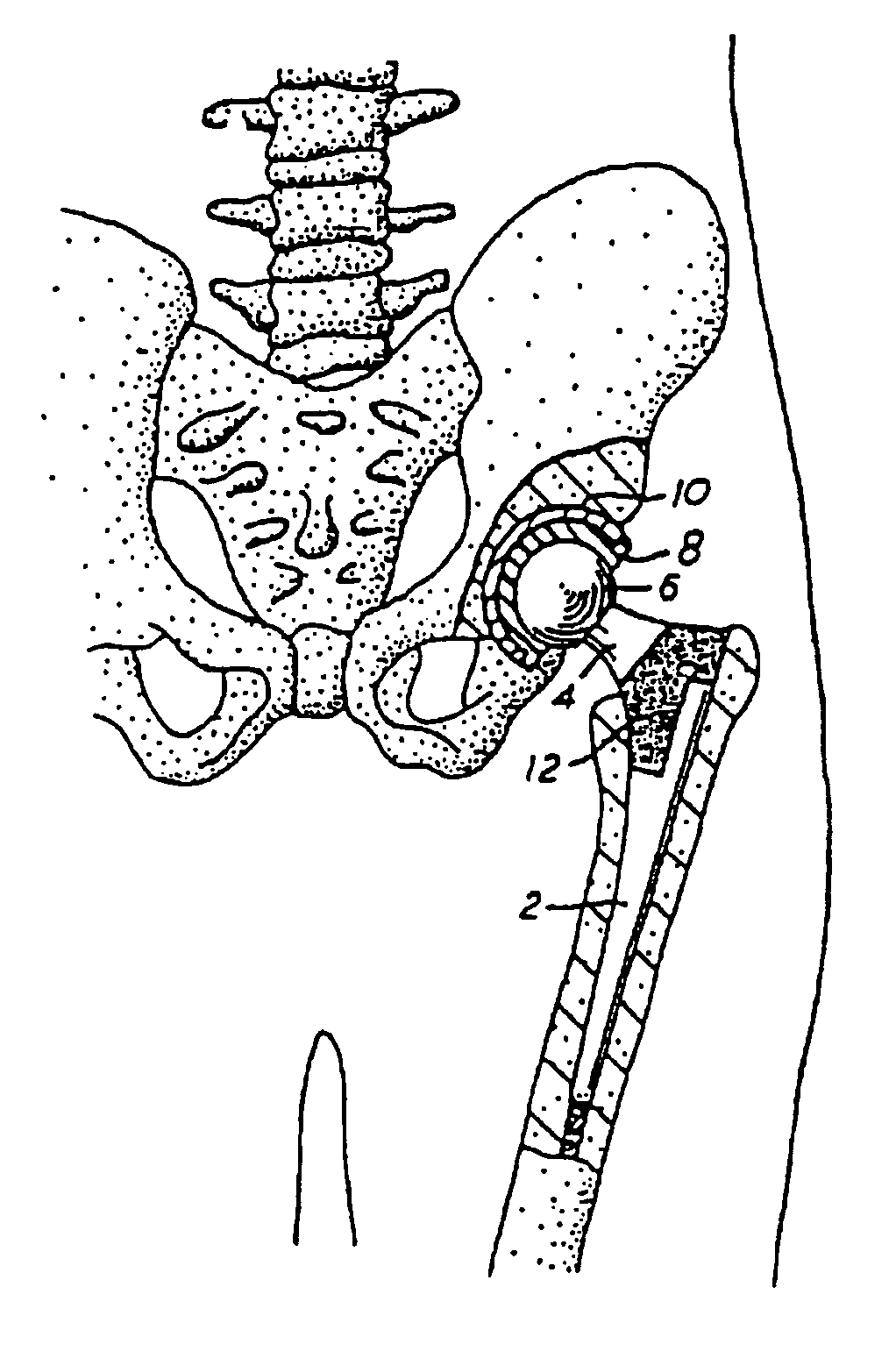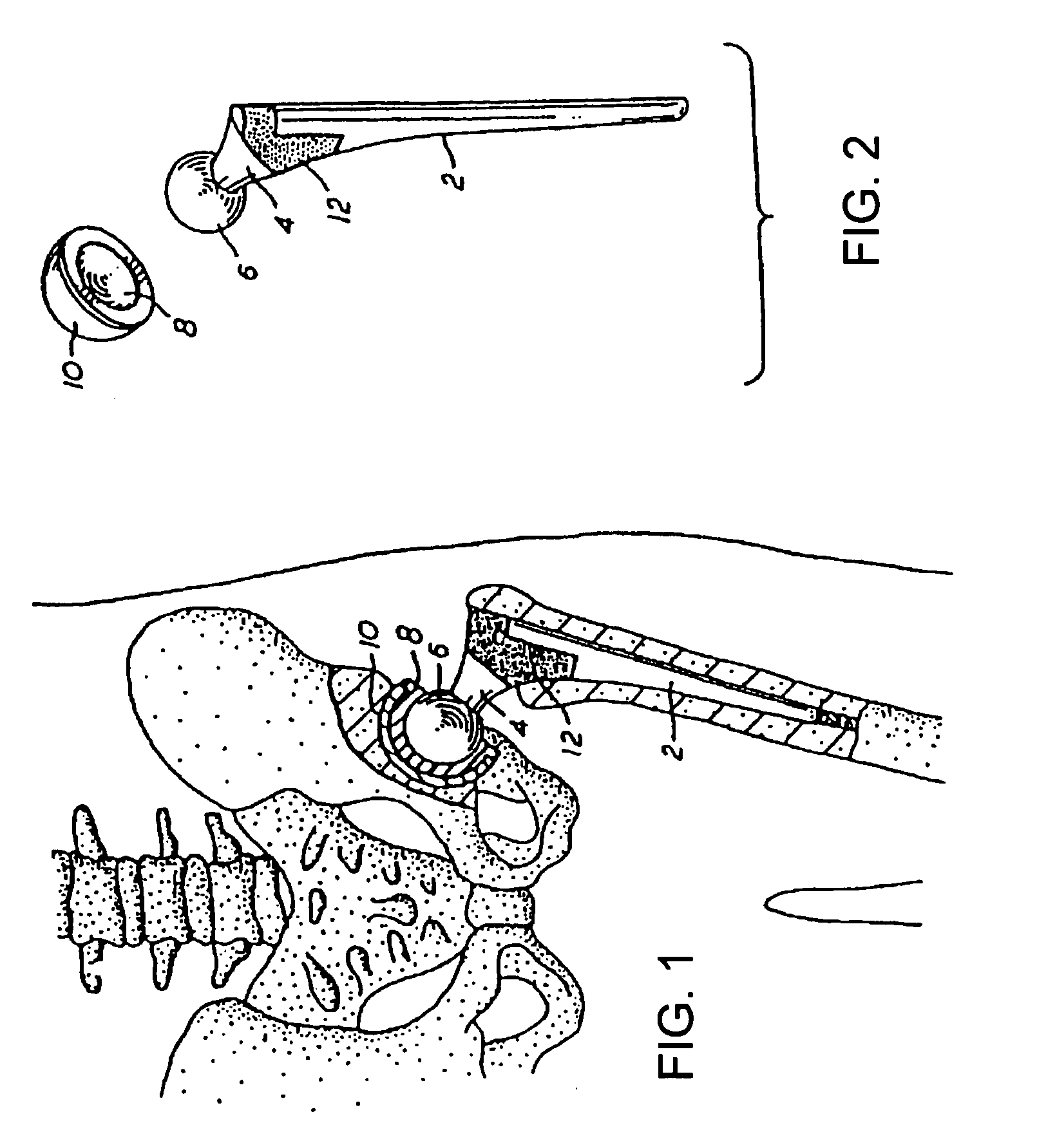Method of surface oxidizing zirconium and zirconium alloys and resulting product
a zirconium alloy and surface oxidizing technology, applied in the field of metal implants, can solve the problems of metal ion release from the prosthesis, low resistance to abrasion, and tendency to gall,
- Summary
- Abstract
- Description
- Claims
- Application Information
AI Technical Summary
Benefits of technology
Problems solved by technology
Method used
Image
Examples
Embodiment Construction
[0025] As used herein, “a” or “an” may mean one or more. As used herein in the claim(s), when used in conjunction with the word “comprising”, the words “a” or “an” may mean one or more than one. As used herein, “another” may mean at least a second or more.
[0026] As used herein, the term “amorphous” or “amorphous structure” means the condition of lacking long range crystalline order.
[0027] As used herein, “zirconium alloy” is defined as any metal alloy containing zirconium in any amount greater than zero. Thus, an alloy in which zirconium is a minor constituent is considered a “zirconium alloy” herein.
[0028] The following discussion contains illustrations and examples of preferred embodiments for practicing the present invention. However, they are not limiting examples. Other examples and methods are possible in practicing the present invention.
[0029] One aspect of the present invention is to provide a method for forming an oxide coating of uniform thickness on zirconium or a zir...
PUM
| Property | Measurement | Unit |
|---|---|---|
| thickness | aaaaa | aaaaa |
| thickness | aaaaa | aaaaa |
| thick | aaaaa | aaaaa |
Abstract
Description
Claims
Application Information
 Login to View More
Login to View More - R&D
- Intellectual Property
- Life Sciences
- Materials
- Tech Scout
- Unparalleled Data Quality
- Higher Quality Content
- 60% Fewer Hallucinations
Browse by: Latest US Patents, China's latest patents, Technical Efficacy Thesaurus, Application Domain, Technology Topic, Popular Technical Reports.
© 2025 PatSnap. All rights reserved.Legal|Privacy policy|Modern Slavery Act Transparency Statement|Sitemap|About US| Contact US: help@patsnap.com



